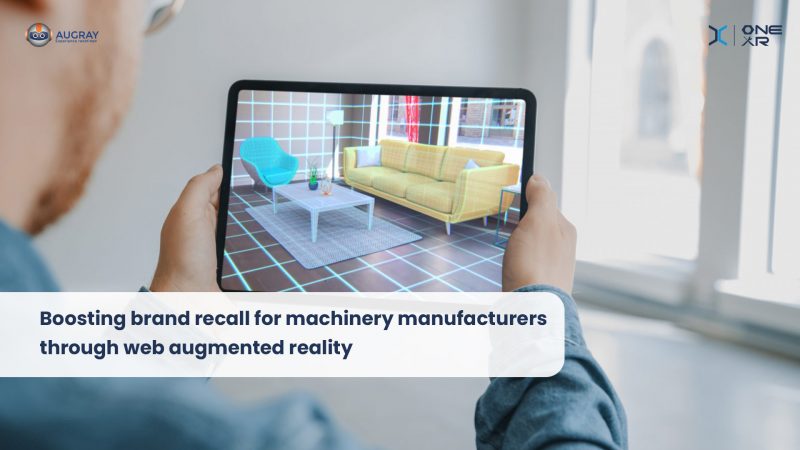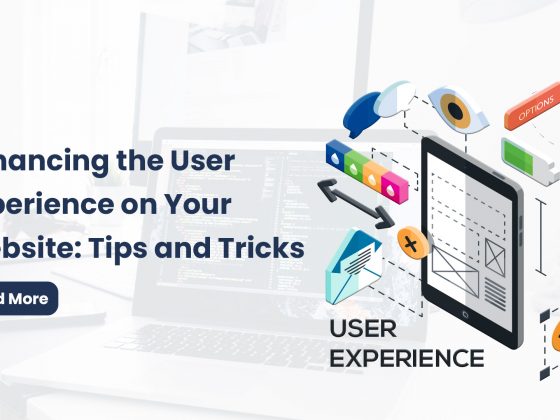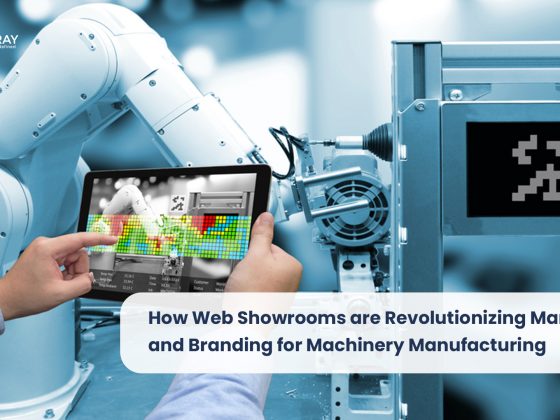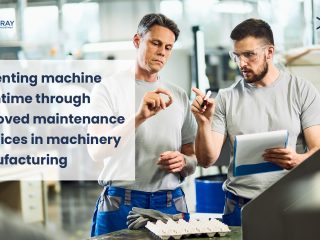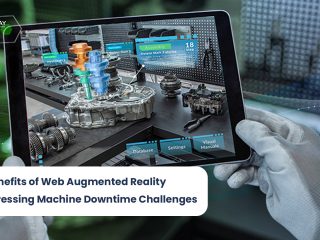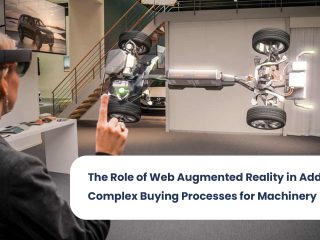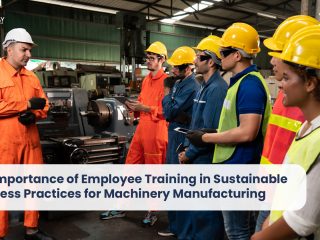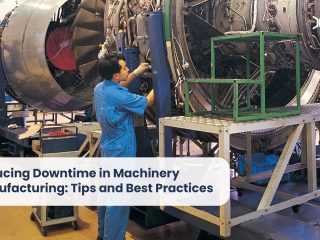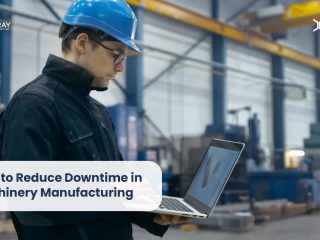In today’s competitive market, machinery manufacturers are always looking for innovative ways to boost brand recall and engage potential customers. One emerging technology that has gained popularity in recent years is web augmented reality (WebAR). WebAR provides a powerful tool for boosting brand recall by providing an engaging and interactive experience for customers that allows them to view and interact with products in 3D.
In this blog, we will discuss the steps for using WebAR to boost brand recall in the machinery manufacturing industry, the advantages of using WebAR, and examples of successful WebAR campaigns in the industry.
Step 1: Identify Branding Objectives
The first step in using WebAR to boost brand recall is to identify your branding objectives. This involves determining what you want to achieve through the WebAR campaign, such as increasing brand awareness, promoting new products, or building brand loyalty among customers.
Advantages:
- Helps to set clear goals for the WebAR campaign
- Ensures that the campaign aligns with overall branding objectives
- Provides a basis for measuring the effectiveness of the campaign.
Example: JCB, a leading manufacturer of construction equipment, used WebAR to showcase their new product line at a trade show. Their branding objectives were to increase brand awareness and promote their new products to potential customers.
Step 2: Create Engaging 3D Assets
The second step in using WebAR to boost brand recall is to create engaging 3D assets. This involves creating 3D models and animations of your products that can be viewed and interacted with in the WebAR experience.
Advantages:
- Provides a more engaging and immersive experience for customers
- Helps to differentiate your brand from competitors
- Increases the likelihood of brand recall among potential customers.
Example: Komatsu Ltd., a leading manufacturer of construction and mining equipment, created 3D models of their products for use in their WebAR campaign. This allowed customers to view and interact with their products in 3D, providing a more engaging and immersive experience than traditional marketing materials.
Step 3: Build a Compelling WebAR Experience
The third step in using WebAR to boost brand recall is to build a compelling WebAR experience. This involves creating a user-friendly interface that allows customers to easily access and interact with the 3D assets created in step 2.
Advantages:
- Provides a seamless and engaging experience for customers
- Helps to increase the effectiveness of the WebAR campaign
- Increases the likelihood of brand recall among potential customers.
Example: Caterpillar Inc., a leading manufacturer of heavy equipment, created a WebAR experience that allowed users to view and interact with their products in 3D. The interface was user-friendly and provided a seamless experience for customers.
Step 4: Integrate the WebAR Campaign into Your Marketing Efforts
The fourth step in using WebAR to boost brand recall is to integrate the WebAR campaign into your marketing efforts. This involves promoting the WebAR experience through social media, email marketing, and other channels.
Advantages:
- Helps to drive traffic and engagement with the WebAR experience
- Provides a more integrated and cohesive marketing campaign.
Example: Volvo Construction Equipment used WebAR to showcase their products at a trade show. They integrated the WebAR experience into their marketing campaign by promoting it on social media and through email marketing. This helped to drive traffic to the WebAR experience and increase brand recall among potential customers.
Step 5: Measure the Effectiveness of the WebAR Campaign
The final step in using WebAR to boost brand recall is to measure the effectiveness of the campaign. This involves tracking user engagement and interaction with the WebAR experience, as well as monitoring the impact on brand recall and other branding objectives identified in step 1.
Advantages:
- Provides valuable insights into the effectiveness of the WebAR campaign
- Helps to identify areas for improvement and refinement for future campaigns
- Provides a basis for demonstrating the ROI of the WebAR campaign.
Example: Liebherr Group, a leading manufacturer of construction machinery, used WebAR to showcase their products at a trade show. They tracked user engagement and interaction with the WebAR experience and found that the WebAR campaign increased brand recall and drove traffic to their booth at the trade show.
Advantages of Using WebAR to Boost Brand Recall
Using WebAR to boost brand recall provides several advantages for machinery manufacturers:
Provides a more engaging and interactive experience for customers: WebAR allows customers to view and interact with products in 3D, providing a more engaging and immersive experience than traditional marketing materials.
Helps to differentiate your brand from competitors: WebAR provides a unique and innovative way to showcase your products and differentiate your brand from competitors.
Increases the likelihood of brand recall among potential customers: The engaging and interactive nature of WebAR increases the likelihood that customers will remember your brand and products.
Provides valuable data insights for continuous improvement and refinement of the campaign: Tracking user engagement and interaction with the WebAR experience provides valuable insights for improving and refining future campaigns.
Examples of Successful WebAR Campaigns in the Machinery Manufacturing Industry
- Komatsu Ltd.: Komatsu Ltd. used WebAR to showcase their products at a trade show. The WebAR experience allowed customers to view and interact with their products in 3D, providing a more engaging and immersive experience than traditional marketing materials.
- Caterpillar Inc.: Caterpillar Inc. created a WebAR experience that allowed users to view and interact with their products in 3D. The interface was user-friendly and provided a seamless experience for customers.
- Volvo Construction Equipment: Volvo Construction Equipment used WebAR to showcase their products at a trade show. They integrated the WebAR experience into their marketing campaign by promoting it on social media and through email marketing.
- JCB: JCB used WebAR to showcase their new product line at a trade show. The WebAR experience allowed customers to view and interact with their products in 3D, increasing brand awareness and promoting their new products to potential customers.
- Liebherr Group: Liebherr Group used WebAR to showcase their products at a trade show. They tracked user engagement and interaction with the WebAR experience and found that the WebAR campaign increases brand recall and drove traffic to their booth at the trade show.
In conclusion, WebAR provides a powerful tool for boosting brand recall in the machinery manufacturing industry. By providing a more engaging and interactive experience for customers, WebAR can help to differentiate your brand from competitors, increase brand awareness and recall, and provide valuable data insights for continuous improvement and refinement of the campaign.
To successfully use WebAR to boost brand recall, it is important to follow the steps outlined in this blog: identify branding objectives, create engaging 3D assets, build a compelling WebAR experience, integrate the WebAR campaign into your marketing efforts, and measure the effectiveness of the campaign.
